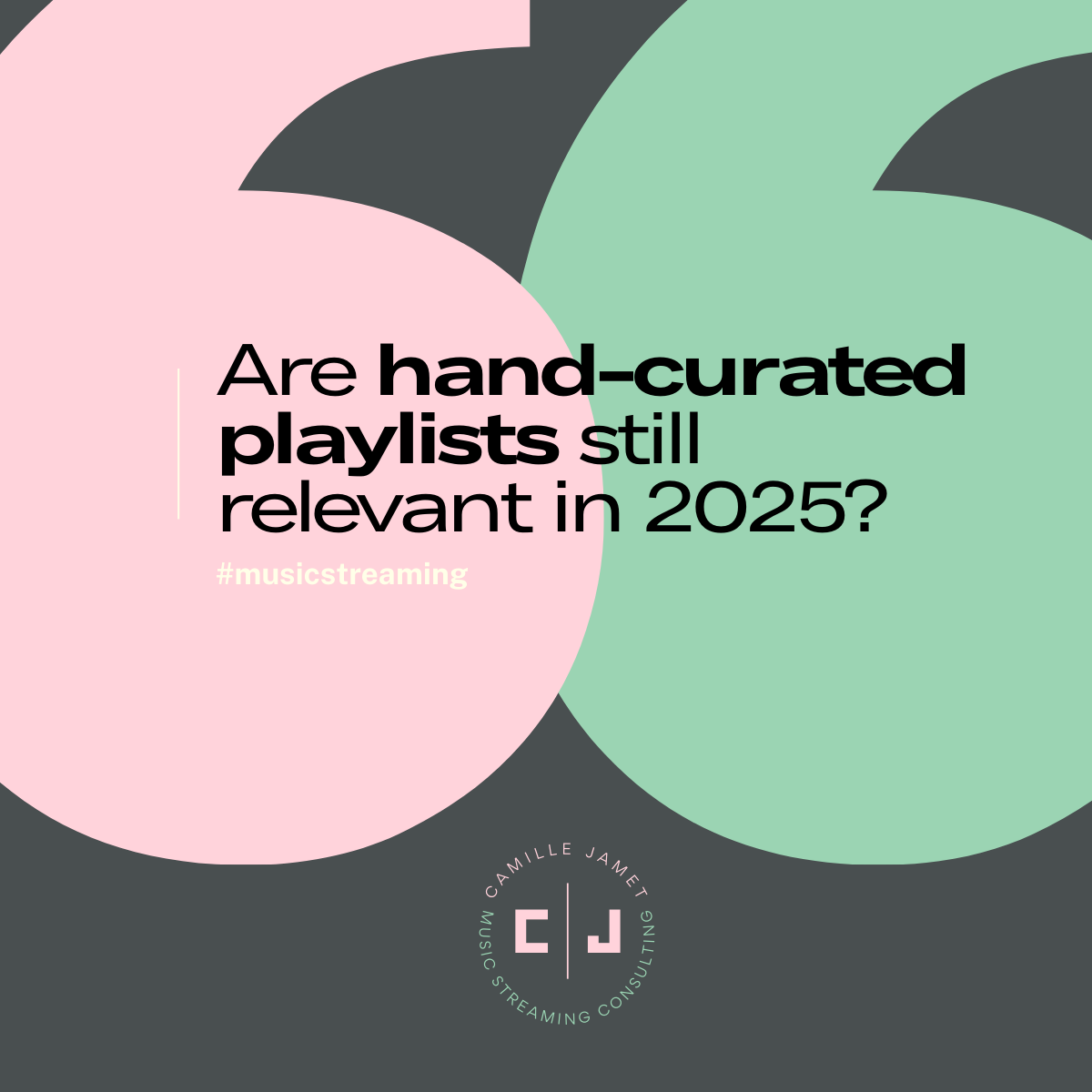Are hand-curated playlists still relevant in 2025 ?
As AI reshapes music discovery, what is the real future of third-party and hand-curated playlists? Here’s what artists and curators need to know.
The playlist era transformed music consumption. For years, hand-curated and third-party playlists played a central role in helping artists gain visibility. But with the rise of AI-powered music recommendation systems, personalized streaming experiences, and the sheer volume of content, we need to ask: What is the future of human-curated playlists?
From my experience in streaming strategy, I believe the game is shifting. Algorithms are outperforming humans in speed, scale, and accuracy. But that doesn’t mean curation is dead… it just means its value is evolving.
1. What algorithms do better than human curators
Let’s be clear: machines win on scale. An AI-based music recommendation engine can process millions of tracks and behavioral signals in real time. It learns what users skip, what they replay, what they save and tailors music to their preferences faster than any editor or playlist curator could.
Platforms like Spotify, Apple Music, and YouTube are investing heavily in algorithmic curation and personalized playlists because it works. It’s more engaging, more accurate, and more scalable. For artists, this means a shift in strategy: playlist pitching alone is no longer enough.
2. The declining influence of third-party playlists
In this landscape, many third-party playlists are losing impact. They often have impressive follower numbers, but their influence on real streaming performance is limited unless they drive library adds and long-term listening.
The truth is: most playlists are used for passive listening or discovery, not for building a loyal fanbase. If the listener doesn’t save the song or follow the artist, the gain is superficial. And this is where many third-party curators struggle to prove value in 2025.
3. The only real strength of hand-curated playlists: Trust
Where human curators still have power is in editorial voice, legitimacy, and trust. The most valuable curated playlists today are those that have built a strong brand identity or a niche community that listens with intention.
Think of it like a music magazine or a tastemaker channel: if your audience trusts your selection, your playlist still matters not for scale, but for influence. This is where cultural positioning, storytelling, and authentic connection win over the algorithm.
4. Active listeners matter more than placement
If you’re an artist, the most important metrics aren’t playlist adds or follower counts. It’s how many active listeners you’re gaining. Are people saving your track to their library? Are they following you? Replaying your song? Coming back to it?
These are the signals that drive the algorithm. That’s how virality becomes sustainable. And most hand-curated playlists don’t drive that kind of engagement unless they’ve built that rare mix of trust and context.
5. What’s next for playlists and music curation?
IMO the future of playlists lies in hybridization. AI will dominate scale and personalization, but human curators will hold value where trust and identity matter.
For curators, this means moving beyond « tracklists » and into editorial content, storytelling, and audience engagement. For artists and music professionals, it means aligning with high-trust ecosystems rather than chasing exposure that doesn’t convert.
Hand-curated and third-party playlists aren’t disappearing entirely — at least not for now. but their function is shifting. In the age of AI in music, their value is no longer about reach. It’s about context, credibility, and connection.
If you’re building playlists: focus on your editorial voice and community.
If you’re an artist: measure success in listeners, not placements.
If you’re navigating the streaming world: understand that the algorithm doesn’t need help to discover music, but people still do.
Besoin d'informations supplémentaires sur mes prestations et tarifs ou pour prendre un RVD ? Vous êtes au bon endroit.

